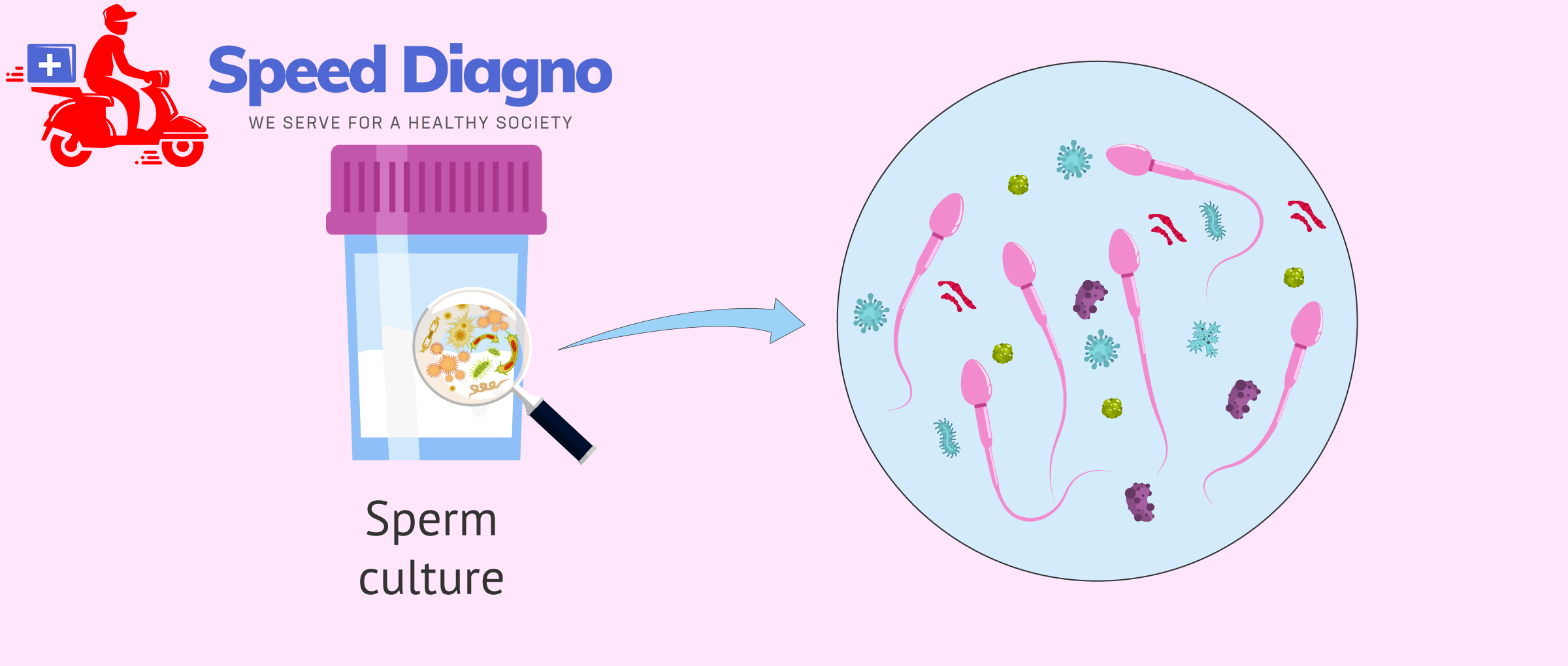- Home
-
Test Categories
- Diabetes
- Urinary
- Thyroid
- RTPCR
- Genetic
- Cancer
- Haematology
- Biochemistry
- Serology & Immunology
- Clinical Pathology
- Cytology
- Microbiology
- Endocrinology
- Histopathology
- MOLECULAR DIAGNOSTICS
- Pregnancy(Biochemistry)
- Liver
- Prostate
- Fertility
- Gastro
- Autoimmune Disorders
- Heart
- Kidney
- Vitamins
- Tuberculosis (TB)
- Anemia
- Fever
- Allergy
- Blood Tests Rare
- Profiles
- Packages
- About Us
- Why Choose Us
- Upload Prescription
- Corporate Wellness
- Contact Us

-
Overview
Semen Culture and Sensitivity is a diagnostic test used to detect the presence of bacteria, fungi, or other microorganisms in semen that may cause infections in the male reproductive tract, such as prostatitis, epididymitis, or orchitis. The test involves culturing the semen sample in a laboratory to identify any pathogens present, followed by sensitivity testing to determine the most effective antibiotics for treating the infection. This test is particularly important for diagnosing infections that may affect fertility or cause other health complications.
Patient Preparation for Semen Culture and Sensitivity
Fasting Requirements:
- Fasting: No fasting is required for this test. Patients can eat and drink normally unless otherwise directed by their healthcare provider.
Other Preparations:
- Abstinence: Patients should abstain from ejaculation for 2-5 days before the test to ensure the quality and volume of the semen sample.
- Avoid Antibiotics: If possible, avoid taking antibiotics for at least 48 hours before the test, as they can affect the accuracy of the results. Inform the healthcare provider of any current medications.
- Hygiene: Wash hands and genital area thoroughly before collecting the sample to reduce contamination from skin bacteria.
- Avoid Contaminants: Do not use lubricants, creams, or soaps on the genital area before collection, as these can interfere with the test results.
Sample Collection Process by Speediagno Phlebotomist or Technician:
Speediagno ensures a comfortable and private environment for the collection of semen samples, adhering to strict protocols to prevent contamination.
Preparation for Sample Collection:
- Identify the Patient: The technician confirms the patient’s identity using at least two identifiers (e.g., name and date of birth).
- Consent and Explanation: The procedure is explained to the patient, including instructions on how to properly collect the semen sample.
Semen Collection Process:
- Hand Hygiene and PPE: The technician performs hand hygiene and uses gloves when handling the collection kit and sample to maintain a sterile environment.
- Private Collection Room: A private room is provided to the patient for sample collection, ensuring privacy and comfort.
- Collection Method:
- The sample is collected via masturbation into a sterile container provided by the technician. It is important to avoid collecting the sample using condoms, lubricants, or through sexual intercourse to prevent contamination.
- The entire ejaculate must be collected, as missing part of the sample can affect the test results.
- Labeling and Sealing: The semen container is securely closed and labeled with the patient’s details, including the date and time of collection.
Post-Collection Care:
- Sample Handling: The collected sample should be kept at body temperature and delivered to the laboratory within 1 hour of collection for the most accurate results.
- Instructions for the Patient: If the sample is collected at home, it should be kept at room temperature and transported to the lab immediately, avoiding extreme temperatures.
Safety and Hygiene Protocols:
- Proper Disposal: Used gloves and any disposable materials are discarded in designated waste bins according to hygiene protocols.
- Documentation: The procedure is documented accurately to ensure traceability and correct processing in the laboratory.
Laboratory Processing:
- Culture: The semen sample is cultured to identify any bacteria, fungi, or other pathogens present. The culture process usually takes 24-48 hours, depending on the growth rate of the organisms.
- Sensitivity Testing: If microorganisms are detected, they undergo sensitivity testing to determine the most effective antibiotics for treatment.
This detailed and professional approach ensures high-quality semen samples for culture and sensitivity testing, aiding in the accurate diagnosis and treatment of infections in the male reproductive tract.
All test groups and subgroup
-
SEMEN CULTURE & SENSITIVITY
-
Culture Method
-
Sample
-
Culture Report: Culture yields growth of
-
-
Antibiotic Sensitivity (Kirby - Bauer Disc Diffusion Method)
-
Amoxicillin(AMX)
-
co-trimoxazole(SXT)
-
co-trimoxazole(SXT)
-
Azithromycin ( AZ )
-
Amoxicillin clavulanate acid (AMC )
-
Cefazolin(CFZ)
-
Cefuroxime(XM)
-
Chloramphenicol(C)
-
Ciprofloxacin(CL)
-
Cephalexin(CFM)
-
Ofloxacin(OF)
-
Erythromycin(EM)
-
Penicillin(P)
-
Piperacillin(PL)
-
Tetracycline(TE)
-
